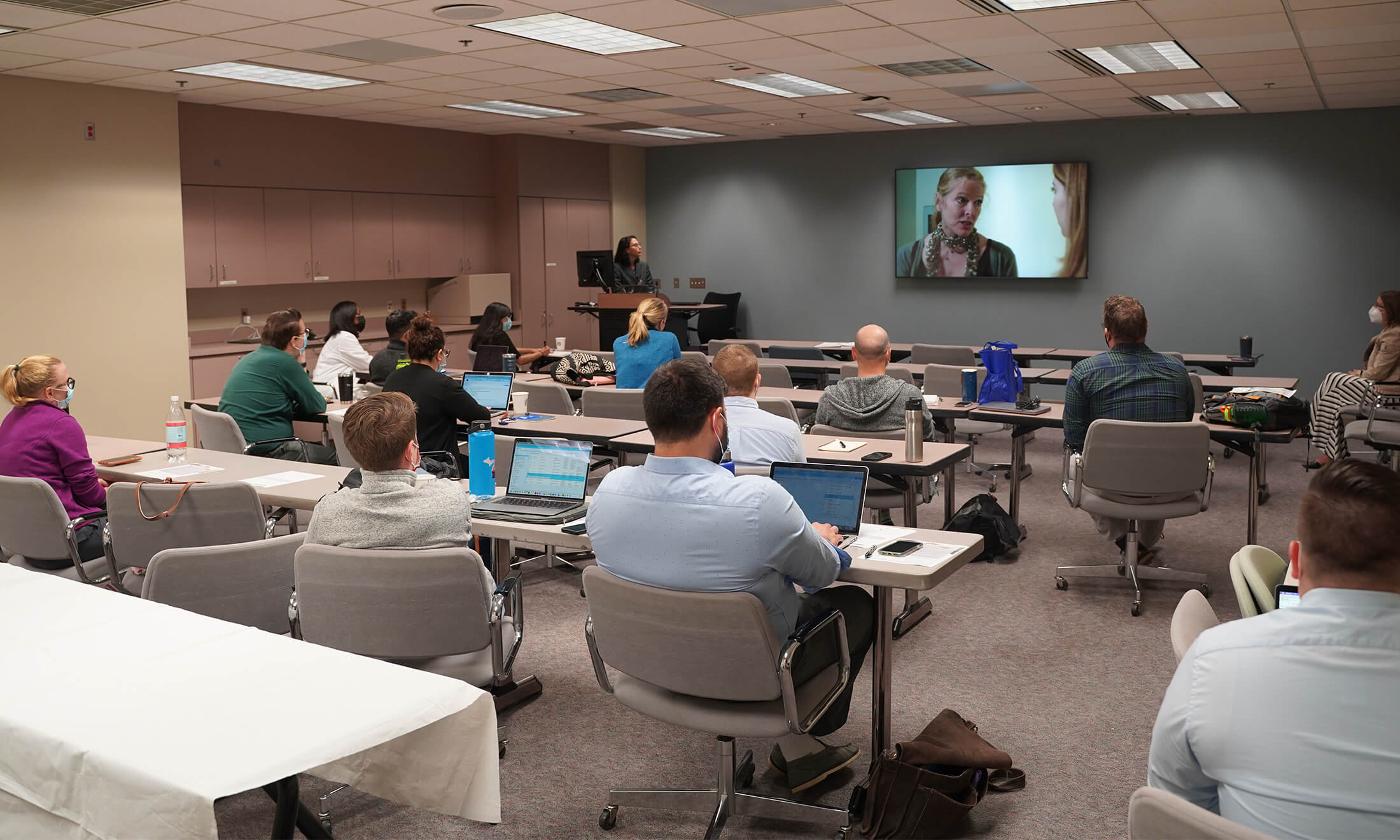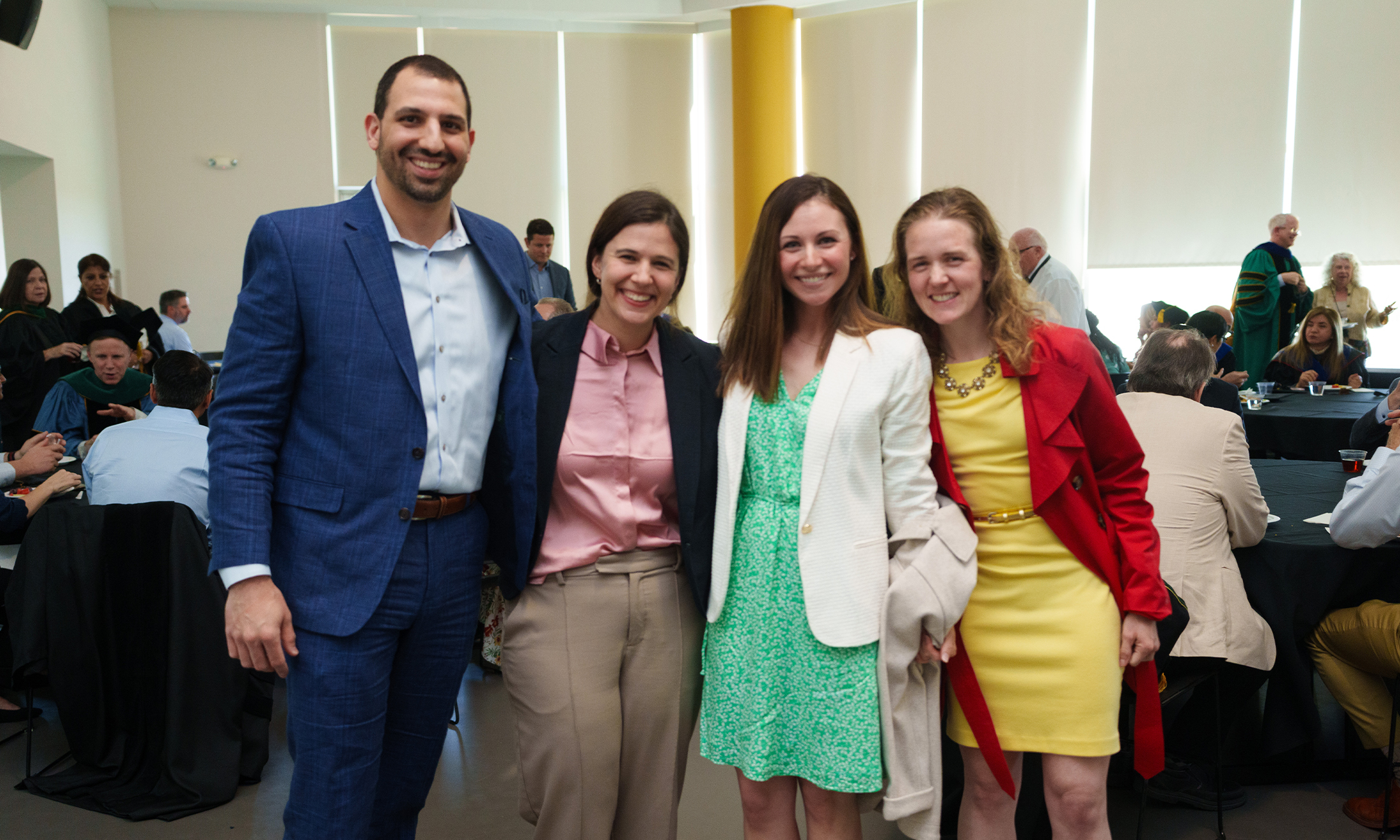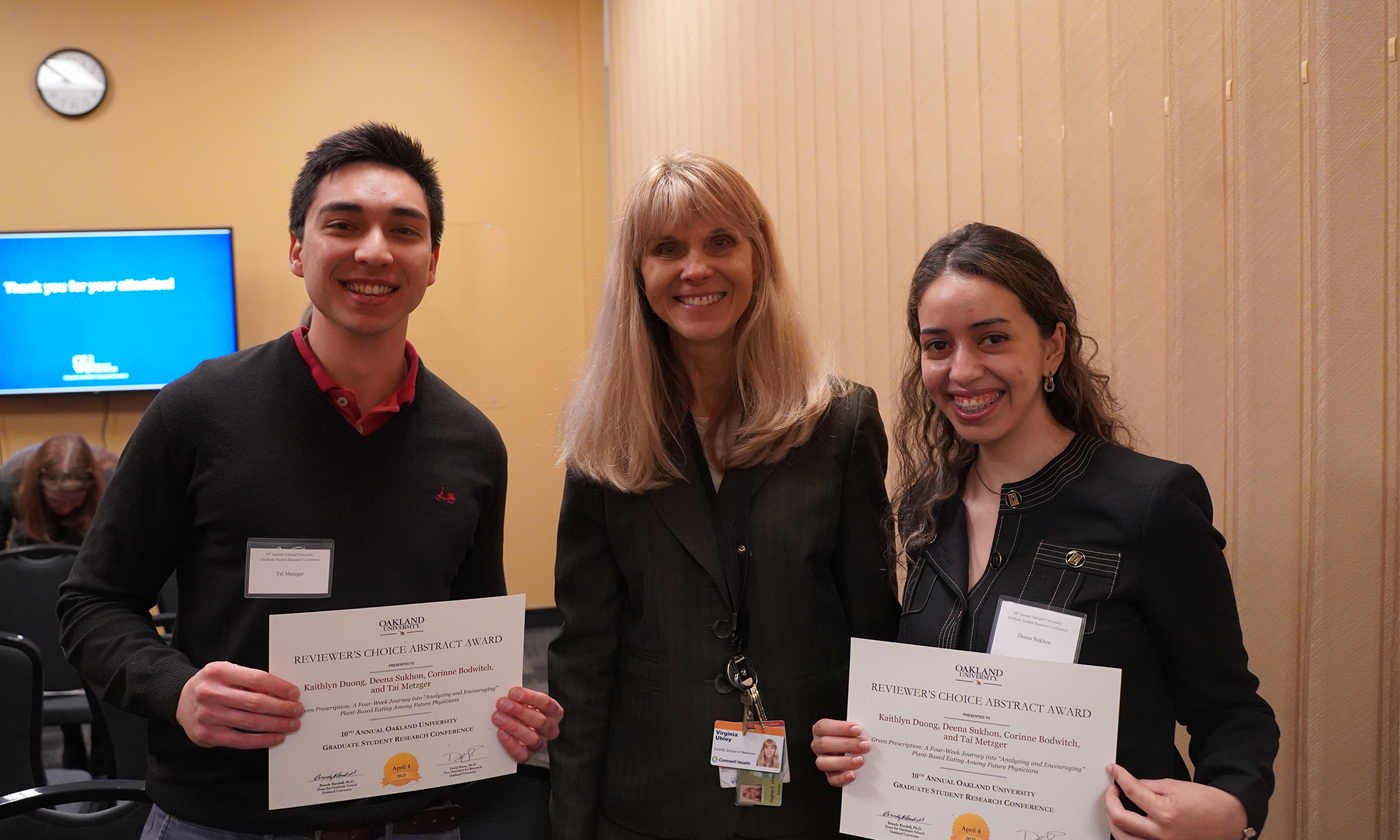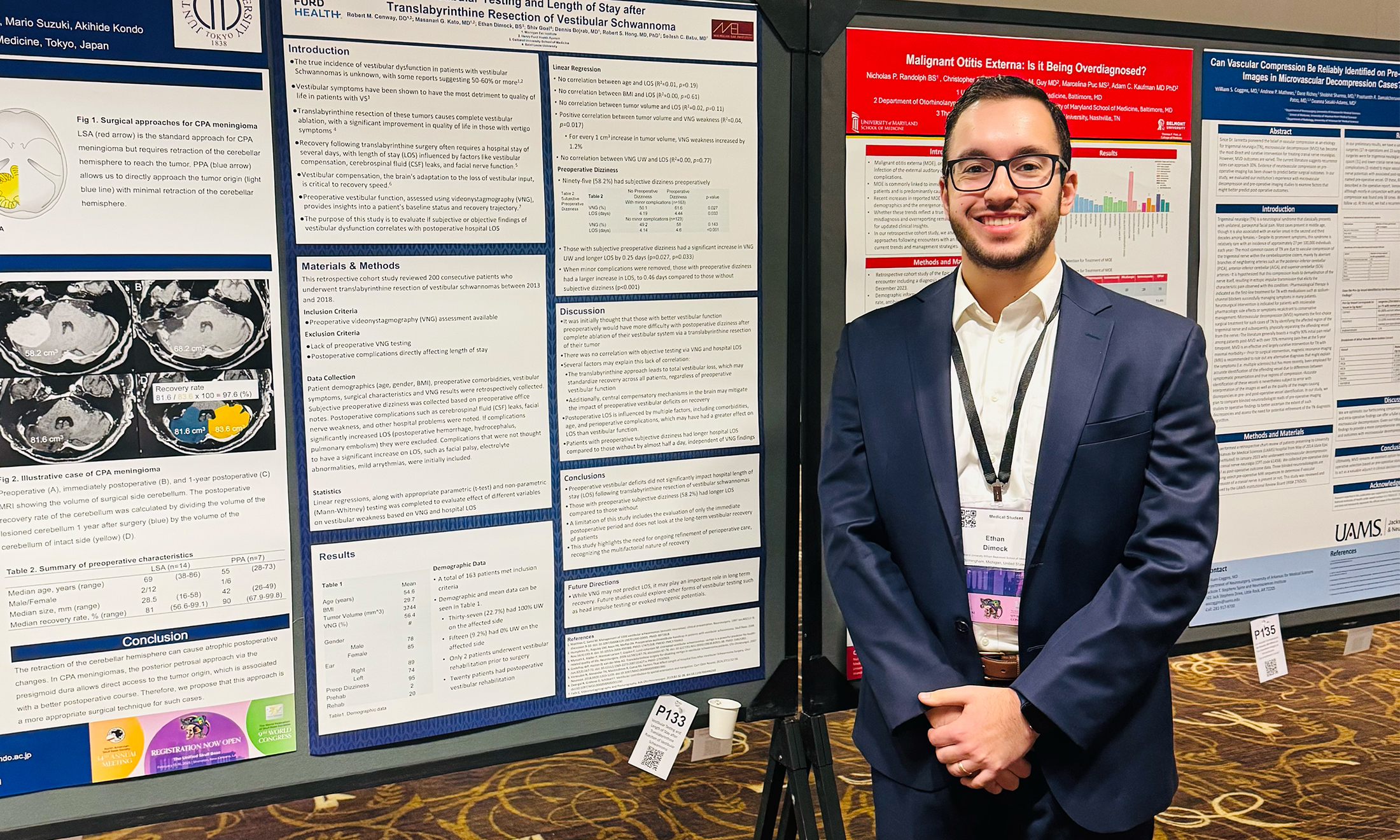Fighting unconscious bias
OUWB officials have trained more than 2,000 health care providers this year
Since January, OUWB officials have trained more than 2,000 people on topics related to unconscious bias — helping raise general awareness, and health care providers meet new licensing requirements.
Led by the school’s Center for Excellence in Medical Education (CEME), more than 40 sessions under the “unconscious bias umbrella” have been held, with titles such as “Understanding the Relationship Between Unconscious Bias and Microaggressive Behavior in the Healthcare Environment,” and “Race and Racism in Medical Education.”
They’re the kind of sessions OUWB has had internally for years, but new state of Michigan licensing requirements that recently went into effect opened the door for school officials to expand their audience, said Ann Voorheis-Sargent, Ph.D., director, CEME.
Voorheis-Sargent said demand “exploded” — particularly from health care providers at BHSH System — when her team started advertising last December for the sessions.
“Some of the first sessions had more than 100 people in them,” she said. “They were just way more full than we would have ever imagined…we had to divide up sessions and offer more options.”
“We realized then how needed it was.”
Mitigating the impact of implicit bias
During the height of the COVID-19 pandemic, it was widely reported that many people felt patients were not being treated equally with regard to the disease.
As a result, Michigan Gov. Gretchen Whitmer announced in June 2021 that the state’s Department of Licensing and Regulatory Affairs (LARA) was adopting new administrative rules that require implicit bias training as part of the knowledge and skills necessary for the licensure or registration of health care professionals in Michigan.
"Today's new training guidelines will help us mitigate the impacts of implicit bias and ensure every patient in Michigan receives the best possible care," Whitmer said at the time.
"These rules will save lives and improve health outcomes for generations of Michiganders, especially those who have been historically and systemically discriminated against. They will make Michigan safer, healthier, and more just."
Per the new rules, applicants for licensure or registration now need to complete a minimum of two hours of training, and applicants for renewal must complete a minimum of one hour of training each year.
Implicit bias training may be sponsored by a nationally or state-recognized health-related organization, an accredited college or university, a state or federal agency, a continuing education program approved by a state licensing board, or an organization specializing in diversity, equity, and inclusion issues.
The annual training curriculum can cover a variety of topics related to implicit bias but must incorporate strategies to reduce disparities including the administration of self-assessments.
It’s the kind of training OUWB has been offering to its community for years, said Voorheis-Sargent. Consider some of the sessions:
- Everyday Bias
- Understanding the Relationship Between Unconscious Bias and Microaggressive Behavior in the Healthcare Environment
- Toxic: A Black Woman's Story - Facilitating Conversations Surrounding Bias, Microaggressions and Health Disparities
- Shaping a Positive Representation of LGBTQ+ Communities in Medical School Curricula
- Addressing Bias in the Curriculum: Ensuring an Inclusive Curriculum Design in Medical Education
- Microaggressions Against Women are Bad for Men Too: Understanding the Negative Effects of Out-Group Bias on People with In-Group Identities
- Practicing Awareness Regarding Unconscious Bias and Microaggressions
- Building Capacity to Address Incidents of Inappropriate Behavior
- Stepping In: Creating a Culture of Respect and Inclusion
- Race and Racism in Medical Education
With such offerings, said Voorheis-Sargent, it made sense for OUWB to offer the training to health care providers at Beaumont, and then beyond.
“From January to March, we trained more than 1,000 people on implicit bias,” she says. “We then opened it up to others…Oakland University, pharmacists, nursing, ambulatory. We’re seeing people that had never touched OUWB previously.”
By October, OUWB officials had trained more than 2,000.
‘Imperative’ training
Sessions are led by various faculty and administrators from OUWB, including Voorheis-Sargent; Deirdre Pitts, Ph.D., associate dean for Academic, Faculty Affairs and Diversity & Inclusion; Janine DeWitte, M.Ed., assistant dean for Faculty Affairs and Professional Development; Angie Freeman, coordinator for Diversity & Inclusion; and assistant deans for Diversity & Inclusion Tracey Taylor, Ph.D., Vonda Douglas-Nikitin, M.D., and Sheala Jafry, M.D. Several others lead sessions, too.
Sessions are coordinated by Tori Arnold, faculty development coordinator, CEME.
Arnold says that each session must contain several key components, such as a pre-test at the beginning and post-test at the end.
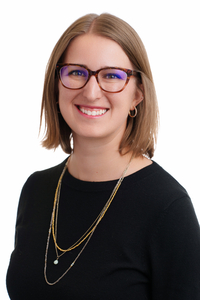 |
| Arnold |
“Each session is structured a little differently based on the topic and what the content is about, but for the most part, it’s an interactive session,” she said. “We don’t want to just be lecturing people about what they should or shouldn’t be doing.”
A session held Aug. 29 for graduate nursing students is a prime example. Led by Pitts and Voorheis-Sargent, the session used interactive pre- and post-tests, videos, small group discussions, and more.
The overall intent was to help the more than 50 attendees, among other things, better understand unconscious bias, how bias and the process of the unconscious mind can impact critical decisions; and apply new strategies for practicing more conscious awareness.
Linda McDonald, DNAP, clinical coordinator for the OU graduate program of nurse anesthesia, said “it was really nice” to have the program available.
She says she hopes the session helped people “be aware of their biases.”
“Because I think we all do have them even if we think we don’t and we’re better than that,” she says.
Jaden Fowler, RN, attended the session and said he thought “it was great.”
“When they passed everything into law, I thought it was one of the best things that could happen,” he said.
Fowler said he feels it’s “imperative” that nurses have such training.
“Everyone in this program will really benefit…I think that they’re going to gain a lot of wisdom and experience as to how to communicate with their patients.”
Such reactions are among the many reasons Voorheis-Sargent and Arnold said being involved in the training is “very rewarding.”
“We’re helping our clinical faculty get their LARA requirements and there’s also name and brand recognition (for OUWB),” said Voorheis-Sargent. “We’re also getting great feedback with people saying they learned a lot and enjoyed it.”
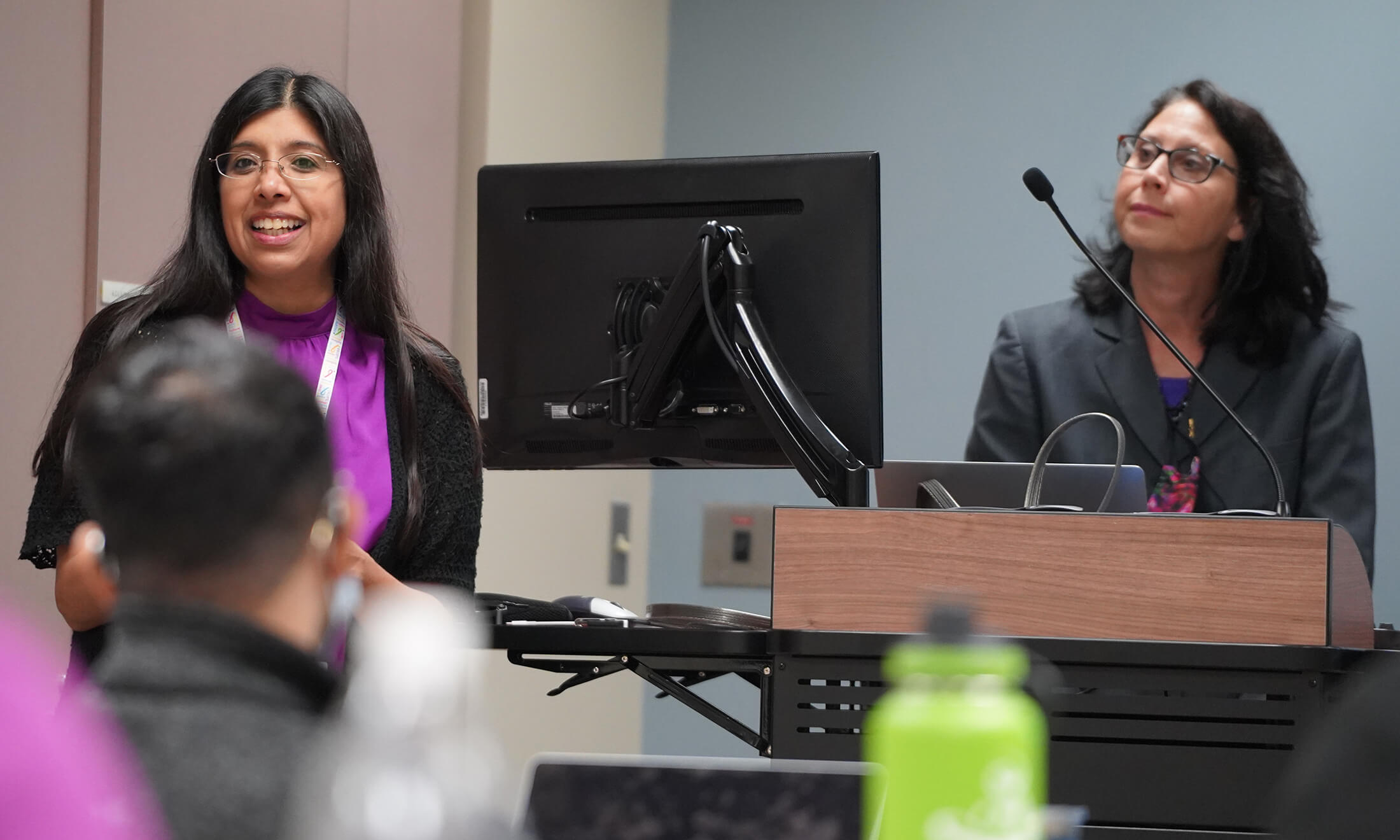
 October 07, 2022
October 07, 2022
 By Andrew Dietderich
By Andrew Dietderich